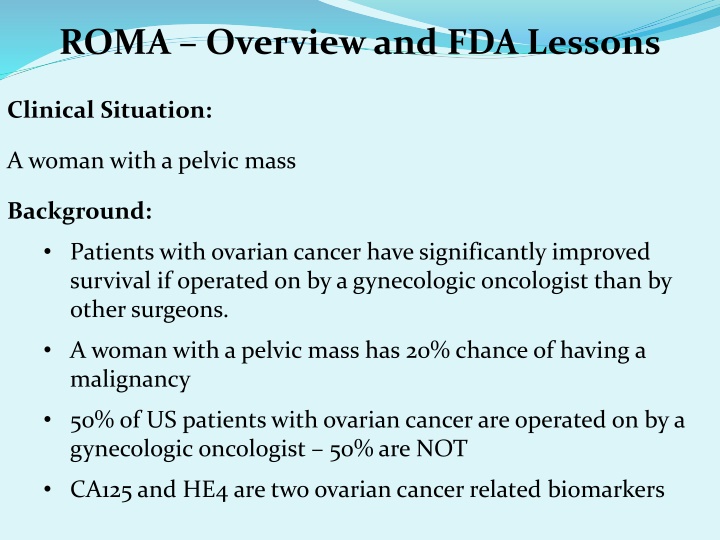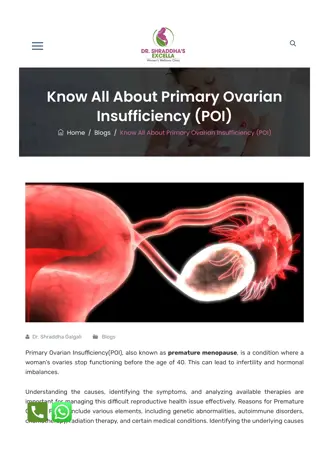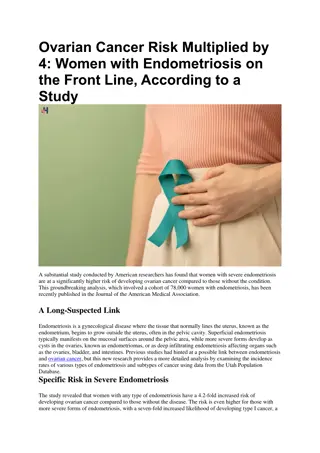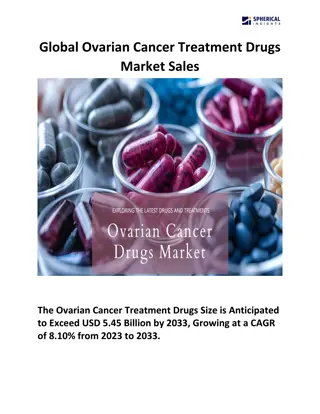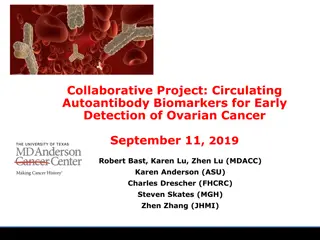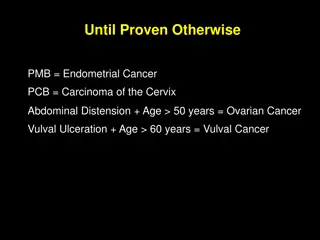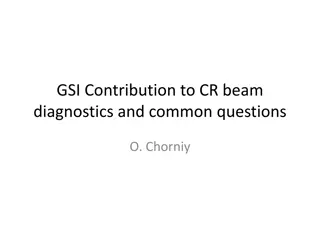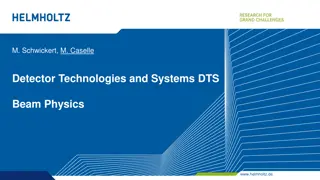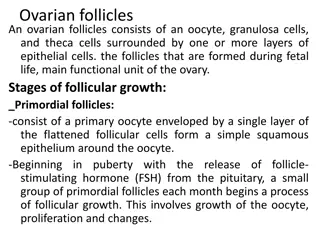Insights into Ovarian Cancer Diagnostics
Patients with a pelvic mass have a risk of malignancy, highlighting the importance of accurate diagnostics. The ROMA algorithm aims to identify high-risk cases promptly, enhancing referral to specialized care and reducing the need for multiple surgeries. Despite promising results, FDA challenges and rejections underscore the complexities of advancing ovarian cancer diagnostic tools.
Download Presentation

Please find below an Image/Link to download the presentation.
The content on the website is provided AS IS for your information and personal use only. It may not be sold, licensed, or shared on other websites without obtaining consent from the author.If you encounter any issues during the download, it is possible that the publisher has removed the file from their server.
You are allowed to download the files provided on this website for personal or commercial use, subject to the condition that they are used lawfully. All files are the property of their respective owners.
The content on the website is provided AS IS for your information and personal use only. It may not be sold, licensed, or shared on other websites without obtaining consent from the author.
E N D
Presentation Transcript
ROMA Overview and FDA Lessons Clinical Situation: A woman with a pelvic mass Background: Patients with ovarian cancer have significantly improved survival if operated on by a gynecologic oncologist than by other surgeons. A woman with a pelvic mass has 20% chance of having a malignancy 50% of US patients with ovarian cancer are operated on by a gynecologic oncologist 50% are NOT CA125 and HE4 are two ovarian cancer related biomarkers
ROMA Overview and FDA Lessons Challenge: Can a diagnostic test identify which women with a pelvic mass have a high risk for malignancy? Benefit: Women with pelvic masses with high risk of malignancy referred immediately to a tertiary care center with a gynecologic oncology department
ROMA - Derived from Retrospective Study Postmenopausal PI = -12 + 2.38*LN(HE4) + 0.0626*LN(CA 125) Premenopausal PI = -8.09 +1.04*LN(HE4) + 0.732*LN(CA 125) PI = Predictive Index ROMA score (%) = exp(PI)/(1+exp(PI)) * 100 Cut-points: Pre: 13% Post: 28%
ROMA Overview and FDA Lessons Intended Use: The risk of malignancy algorithm (ROMA) identifies patients with a high risk of malignancy in women with a pelvic mass Benefit: Women with pelvic masses with high risk of malignancy referred immediately to a tertiary care center with a gynecologic oncology department Reduces risk of two surgeries (generalist, then specialist)
FDA Experience A gynecologic oncologist assembled a group of colleagues to conduct a prospective diagnostic trial of women with a pelvic mass. 500 women with pelvic masses were enrolled Pre-specified criteria of > 80% sensitivity (for malignancy) at 75% specificity Results: postmenopausal: 92% sensitivity at 76% specificity premenopausal: 100% sensitivity at 75% specificity FDA submission sent to panel Panel rejected study Why?
FDA Experience A gynecologic oncologist assembled a group of colleagues to conduct a prospective diagnostic trial of women with a pelvic mass. 500 women with pelvic masses were enrolled Pre-specified criteria of > 80% sensitivity (for malignancy) at 75% specificity premenopausal: 100% sensitivity at 75% specificity Results: postmenopausal: 92% sensitivity at 76% specificity Panel said that samples were not from relevant population Patients were from gynecologic oncology practices Patients need to be from general care (e.g. gynecologist, general internist practices) FDA required new study 2 year delay
ROMA Study II Enrolled 472 evaluable patients 89 malignant, 383 benign The study included premenopausal and postmenopausal women 18 years of age or older presenting to a generalist (defined as a general gynecologist, internist, family practitioner gastroenterologist, or general surgeon) with an ovarian cyst or an adnexal mass and subsequently scheduled to undergo surgery. Postmenopausal: Sensitivity 92% at 76% specificity Premenopausal: Sensitivity 100% at 74% specificity Essentially results the same as first ROMA study Moore et. al. Obstetrics and Gynecology 2011
ROMA Study FDA Lessons Intended Use AND Study Design must ALIGN Intended Use needs careful attention to detail Study Design needs similar level of attention Input from FDA at DESIGN stage can save years
